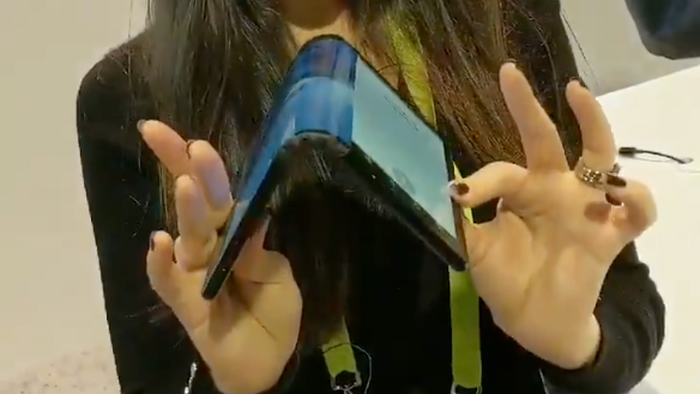The foldable phone market is on the cusp of mainstream adoption, yet it has not fully penetrated the everyday consumer landscape. A key question arises regarding Apple’s potential entry into this segment, with rumors suggesting that the tech giant is planning to release its first foldable phone featuring a book-style design. In contrast, Huawei has already made significant strides by unveiling the Mate XT, touted as the world’s first tri-fold smartphone. This demonstrates that while the market is still developing, companies are pushing boundaries with innovative designs and features, paving the way for the future of foldable devices.
A report from Goldman Sachs analysts Allen Chang and Verena Jeng provides insights into the competitive landscape surrounding foldable phones, highlighting an interesting trend for 2024: an increase in patents related to foldable devices. This surge encompasses a variety of new form factors, including flip models, horizontal-folding designs, and more sophisticated Tri-Fold and Quad-Fold phones. This diversification signals a positive outcome for the supply chain as it increases the potential for higher dollar content in these devices. Moreover, the report emphasizes a shift towards upgrading components, particularly the development of more durable glass panels and advanced hinge designs specific to Tri-Fold devices, which are critical in enhancing the user experience and longevity of foldable smartphones.
The foldable market is also experiencing a broader embrace, with numerous manufacturers recognizing the potential of this technology. Analysts indicate that an increase in the number of brands entering the foldable space is encouraging; major players such as Chinese companies like Huawei and Honor, alongside South Korea’s Samsung, are currently leading in the volume of patents filed in this domain. Notably, Apple is also ramping up its efforts, with a marked increase in foldable phone-related patents this year compared to the last. This intensification of innovation and patent filing among competitors is a strong indicator of the growing interest and potential for foldable devices to capture a larger market share.
Examining specific patents offers further insight into the unique designs and innovations being pursued by different brands. For instance, Apple’s patents appear to address various potential design criteria and usability aspects of foldable technology, setting the stage for future products that could leverage their well-established ecosystem and brand loyalty. Additionally, the ongoing patent discussions and filings suggest a robust pipeline of future offerings, which analysts project will extend up to the year 2025 and beyond.
Mac Rumors recently reported on the expectations surrounding Apple’s entry into the foldable space, citing display analyst Ross Young. Young anticipates that Apple might launch its first foldable device in the latter part of 2026, further solidifying the narrative that tech giants are meticulously planning their forays into this emerging segment. This timeline aligns with the ongoing development of foldable technologies, suggesting that Apple may be adopting a deliberate approach to ensure that its debut device meets the high standards expected from the company.
In conclusion, the foldable phone market is poised for growth, supported by increased patent activities and product innovations from key players. As major brands like Huawei and Samsung lead the way in exploring new designs and functionalities, Apple’s anticipated entry could serve as a pivotal moment for the industry. The evolution of foldable phones stands to reshape consumer expectations and preferences, with advancements in durability and design expected to drive the next wave of smartphone innovation. With the competitive landscape becoming increasingly dynamic, the industry is on the verge of witnessing a significant shift, potentially making foldable smartphones a standard choice for consumers in the coming years.

